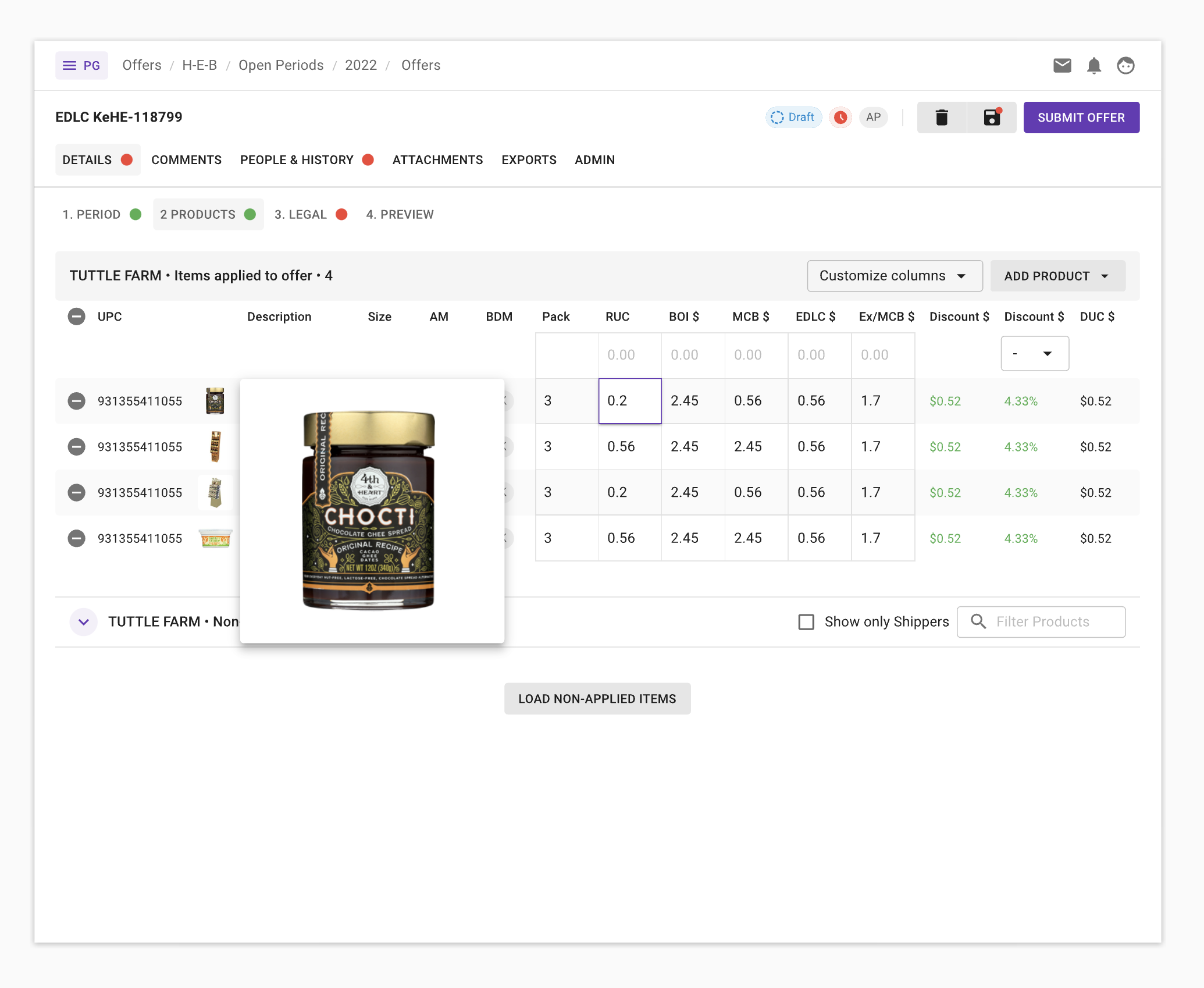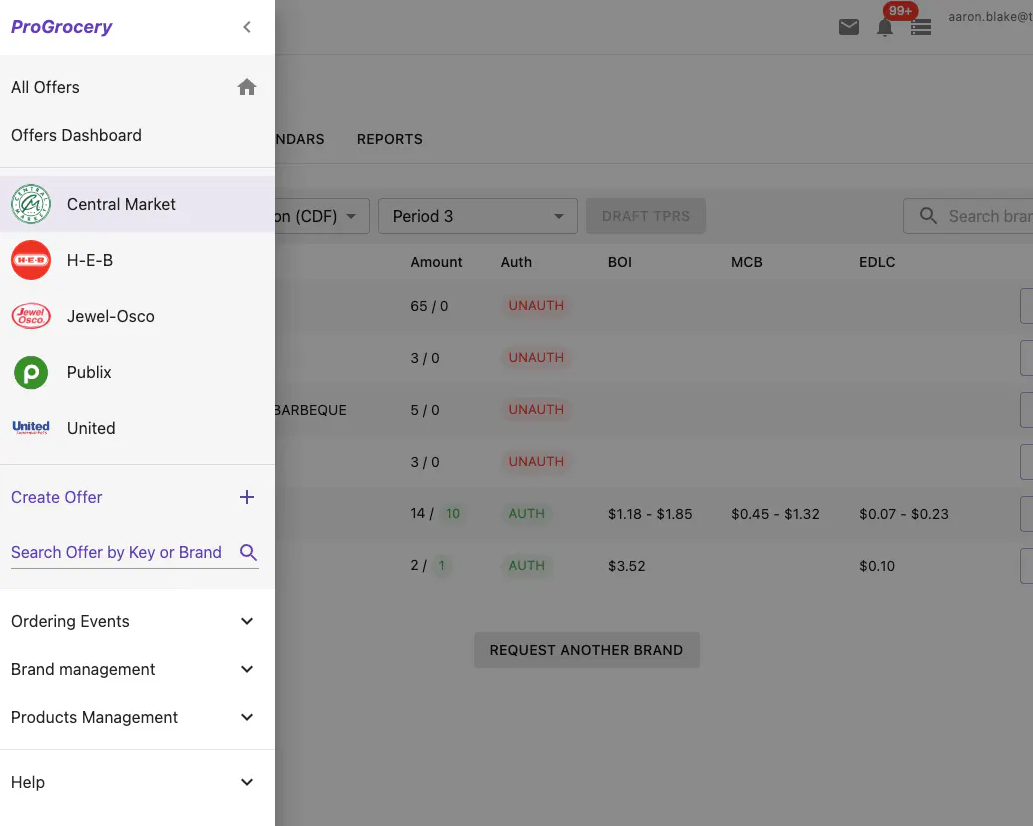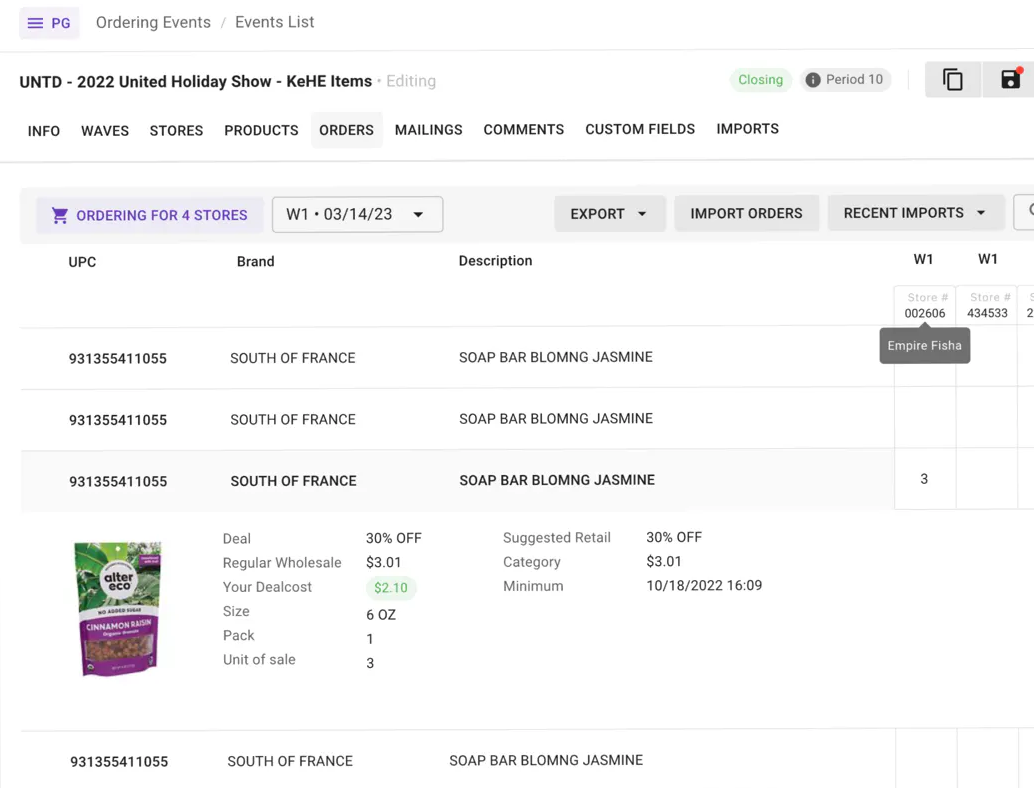Case study
A well-organized supply chain management system for the ProGrocery platform
- Company type
- Digital marketing platform
- Location
- Texas, USA 🇺🇸
- Challenge
- We needed to replace the legacy system and unite multiple data input streams for ordering stock under a new user-friendly system that cut out human error.
- Solution
- We analyzed legacy systems and made the transition to a new system without interrupting day-to-day business.
- Outcome
- The new system tripled ProGrocery's income and cut its clients' ordering workflow from days to hours.
- Utilized technologies
- Ruby on Rails
- HTML5
- ReactJS
- Kubernetes
- PostgresQL
The project - create a web application to handle the complex product ordering workflows.
ProGrocery supplies a platform that a major American food and grocery distributor relies on for its business. We created a tailored user interface for ProGrocery that guides the user through the ordering workflow. This saves the company and its customers significant amounts of time and money by eliminating human error.
This large US grocery distributor was experiencing difficulties with data exchange between themselves and the more than 5,000 brokers and 50,000 retail store managers they partner with.

Their ordering process was seriously out of date and was holding back the business. Their data exchange pipeline included numerous spreadsheets, forms, paper printouts, and reports which made the system cumbersome and unwieldy. Every month they had to spend time making sense of everything they had received from customers before they could get on with the business of processing their grocery orders. It was very inefficient, so they asked us to build a better system.
Project evolution
ProGrocery's old system was based on 3rd party proprietary system, which had been heavily customized to handle the workflows. Even so, they had hit limitations of the existing system and the cost of licenses was uneconomical, so it made commercial sense to opt for a new custom-developed system instead.
Input data was being received in various formats, so we needed to analyze this flow and then adapt it to our new unified model. When designing the system, we ensured that all of our changes and additions would be able to accommodate further expansion in the future.
We came up with a standardized data model which would be suitable for any retail chain in the same field.
Customer core requirements
ProGrocery wanted us to migrate the legacy system, module by module, into the new system while keeping both systems live and accessible. They also placed a strong emphasis on having a clean user interface that would still provide broad functionality.
ProGrocery's customers sometimes go through the ordering process many times a month, so they were keen to keep the time it took them to prepare for each one to a minimum.
They embraced much of the feedback that we solicited from their users, which led to many new features and changes being implemented.

Challenges
We needed to find a way of standardizing input data from different systems in various formats. We would then need to consolidate data about products, prices and other financial information. The interface needed to guide users through multiple workflows, to eliminate human error and save time and money, and the transition process between the old system and the new could not lead to any downtime.
Product development
We came up with a list to tackle the modules in the legacy system in order of priority. We needed to know this so that we could reimplement them in the best way for a seamless transition. We created a list of tasks for each module and then developed features during week-long sprints. Now, after more than five years of partnership, the system has evolved into a robust platform that the client relies on. We're still maintaining it and adding new features.

Utilized technologies
- Ruby on Rails
- ReactJS
- PostgreSQL
- System deployed on Google Cloud Platform using Kubernetes (GKE)
- GitLab CI/CD for ongoing automated code tests
- Deployed multiple times a day
- Multiple testing and production environments used
Product Description
Digital marketing platform that allows:
- update and unify numerous data input methods
- streamline supply chain management processes
- create an easy-to-use interface
- minimize human error
- improve speed of ordering
- increase income